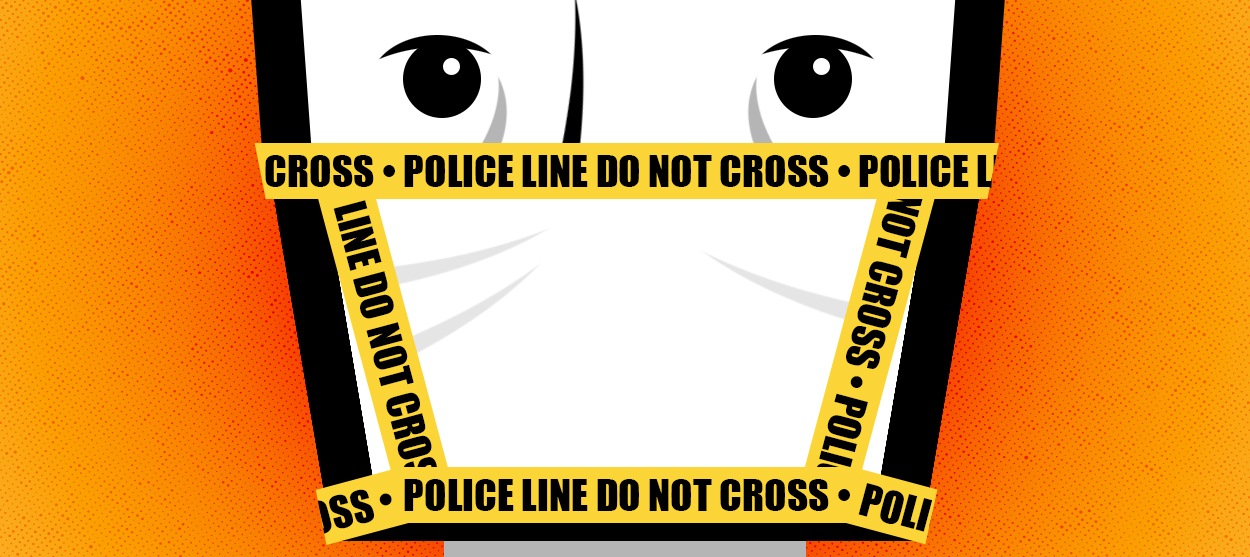The pandemic isn't changing crime like you'd expect
There is no single story about coronavirus and crime rates


Whatever you expect the COVID-19 pandemic to do to crime rates, it's probably not doing that.
Well, not exactly. There's no single story of coronavirus and crime. Some types of crime are increasing during the pandemic, while other crime rates are falling. Crime is up in some places and down in others. It will be tempting, not least for me, to cherry-pick coronavirus-era data to "prove" how our justice system should or shouldn't change, yet as with so much of the pandemic information available to us, right now caution is more warranted than certainty.
By far the most frequent headline claim about crime rates during the COVID-19 outbreak is that they're falling. That's not wrong, but neither is it complete. A USA Today survey of 20 police departments found all but one saw criminal incidents decline in the first two weeks of March as social distancing began. Further analysis of "crime data published by 53 law enforcement agencies in two dozen states" reinforced that trend, USA Today reported, finding law enforcement "logged dramatically fewer calls for service, crime incidents, and arrests" in those two weeks than in the six weeks prior. Residential burglary, robbery, assault, and murder all decreased. (Miami has not had a homicide in six weeks, for example, a record since 1964.)
The Week
Escape your echo chamber. Get the facts behind the news, plus analysis from multiple perspectives.

Sign up for The Week's Free Newsletters
From our morning news briefing to a weekly Good News Newsletter, get the best of The Week delivered directly to your inbox.
From our morning news briefing to a weekly Good News Newsletter, get the best of The Week delivered directly to your inbox.
But some falling crime rates aren't necessarily attributable to change in public behavior. Shifts in policing practice are rather responsible. COVID-19 is spreading within some police departments (notably, New York, Chicago, and Detroit), and in some cities, officers have been directed to avoid unnecessary contact with the public.
That looks like fewer traffic stops and policing of low-level offenses, like loitering or housing code violations, which in turn means fewer drug arrests. "I literally told [my officers], 'I don't care if we don't issue a single ticket summons in the month of April,'" Miami's police chief said. "'I don't want you to unnecessarily interact with someone if you don't have to, for your safety and theirs.' And the amount of people who have been impacted financially is absolutely something that we should be mindful of."
For each of these trends, however, there are significant exceptions. Violent crime rates went slightly up in Boston, with nonfatal shootings on the rise. In Washington, D.C., violent crime overall is down, but assaults are up and homicide has held steady. Baltimore likewise saw property crime decline while violence increased, and assaults are up in Houston, too. Many police departments have reported a spike in domestic violence calls under lockdown, and it's also possible these incidents are being under-reported because victims do not have an opportunity to call.
Domestic violence isn't the only type of crime to rise in clear connection to the pandemic. Noise disturbance and porch pirate complaints are up, and fraudsters have sought to take advantage of coronavirus fears online and off. Meanwhile, lockdown has created a whole new class of crime, and police in many states have arrested people for violating stay-at-home orders. New York Gov. Andrew Cuomo (D) asked the NYPD, which already rejected any notion of laying off broken windows policing during the pandemic, to "get more aggressive" in its social distancing enforcement — even though jails like New York's Riker's Island are dangerous viral vectors.
A free daily email with the biggest news stories of the day – and the best features from TheWeek.com
The bulk of the crime data available now is from the last two weeks of March and the first week of April. This snapshot is not necessarily predictive of how crime rates will behave the longer lockdowns continue and financial distress grows, and coming shifts may not be what we'd anticipate. "The longer we're in a lockdown," San Jose Police Chief Eddie Garcia told the Associate Press, "the more we're playing with fire." Garcia's warning seems intuitive — perhaps unduly influenced by theft stories on my Facebook neighborhood group, I expected to find property crime rising in parallel with unemployment claims — but it's not well-supported in the historical record.
"For one thing, the 1960s, a period of rising crime, had essentially the same unemployment rate as the late 1990s and early 2000s, a period when crime fell. Further, during the Great Depression, when unemployment hit 25 percent, the crime rate in many cities went down," wrote James Q. Wilson, the Harvard political scientist who pioneered the broken windows theory, at City Journal in 2011. In the Great Recession, he continued, when "the national unemployment rate doubled from around 5 percent to nearly 10 percent, the property-crime rate, far from spiking, fell significantly."
This crisis is unlike any other in recent memory, so it may be too early to say whether that pattern will hold. One thing is sure: We'll have a wealth of data to debate when this is over. Justifiably or not, it could shape criminal justice policy for years to come.
Bonnie Kristian was a deputy editor and acting editor-in-chief of TheWeek.com. She is a columnist at Christianity Today and author of Untrustworthy: The Knowledge Crisis Breaking Our Brains, Polluting Our Politics, and Corrupting Christian Community (forthcoming 2022) and A Flexible Faith: Rethinking What It Means to Follow Jesus Today (2018). Her writing has also appeared at Time Magazine, CNN, USA Today, Newsweek, the Los Angeles Times, and The American Conservative, among other outlets.
-
 Political cartoons for January 4
Political cartoons for January 4Cartoons Sunday's political cartoons include a resolution to learn a new language, and new names in Hades and on battleships
-
 The ultimate films of 2025 by genre
The ultimate films of 2025 by genreThe Week Recommends From comedies to thrillers, documentaries to animations, 2025 featured some unforgettable film moments
-
 Political cartoons for January 3
Political cartoons for January 3Cartoons Saturday's political cartoons include citizen journalists, self-reflective AI, and Donald Trump's transparency
